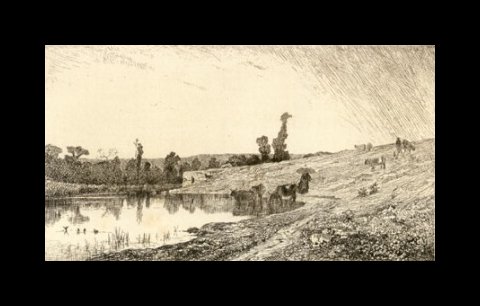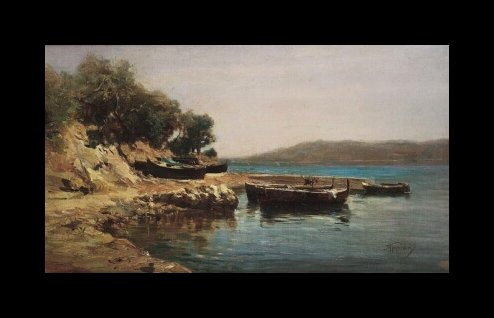Adolphe Appian (1818-1898)
Get a Adolphe Appian (1818-1898) Certificate of Authenticity for your painting (COA) for your Adolphe Appian (1818-1898) drawing.
For all your Adolphe Appian (1818-1898) artworks you need a Certificate of Authenticity (COA) in order to sell, to insure or to donate for a tax deduction.
Getting a Adolphe Appian (1818-1898) Certificate of Authenticity (COA) is easy. Just send us photos and dimensions and tell us what you know about the origin or history of your Adolphe Appian (1818-1898) painting or drawing.
If you want to sell your Adolphe Appian (1818-1898) painting or drawing use our selling services. We offer Adolphe Appian (1818-1898) selling help, selling advice, private treaty sales and full brokerage.
We have been authenticating Adolphe Appian (1818-1898) and issuing certificates of authenticity since 2002. We are recognized Adolphe Appian (1818-1898) experts and Adolphe Appian (1818-1898) certified appraisers. We issue COAs and appraisals for all Adolphe Appian (1818-1898) artworks.
Our Adolphe Appian (1818-1898) paintings and drawings authentications are accepted and respected worldwide.
Each COA is backed by in-depth research and analysis authentication reports.
The Adolphe Appian (1818-1898) certificates of authenticity we issue are based on solid, reliable and fully referenced art investigations, authentication research, analytical work and forensic studies.
We are available to examine your Adolphe Appian (1818-1898) painting or drawing anywhere in the world.
You will generally receive your certificates of authenticity and authentication report within two weeks. Some complicated cases with difficult to research Adolphe Appian (1818-1898) paintings or drawings take longer.
Our clients include Adolphe Appian (1818-1898) collectors, investors, tax authorities, insurance adjusters, appraisers, valuers, auctioneers, Federal agencies and many law firms.
We perform Adolphe Appian art authentication, appraisal, certificates of authenticity (COA), analysis, research, scientific tests , full art authentications. We will help you sell your Adolphe Appian or we will sell it for you.
Adolphe Appian loved nature and throughout his life he was to paint remote regions in France such as the Pyrenees and the Auvergne. It was with Corot and Daubigny that he perfected the technique of plein air, that is, working outside in nature. It is said that what made Appian a great artist is the way that he handled the light both in his paintings and his etchings. It was also under these two great Masters that he studied etching and he was to become one of the great etchers of the time. It was because of his talent for handling the light that later on he was to have an influence on the Impressionists.
He exhibited almost continuously from 1853 and in 1954 made his first visit to the Forest of Fontainebleau where he continuously returned. In 1888 he was awarded the Gold medal at the Paris Salon which firmly established his reputation.

L’Etang de Frignon, 1862
The etching entitled ‘The Port at San Remo’ which can be found at the Fine Arts Museum of San Francisco is a perfect example of why he is said to be one of the most talented etchers of the time.
The 1860s saw etching being hailed as a major artistic form and Appian was to embrace this technique wholeheartedly when he returned to Lyon. He was regularly commissioned to contribute his etchings to journals of the time and in particular the Gazette des Beaux Arts.
He also contributed regularly to the annual albums of the Society of Aquafortistes which allowed printmakers to experiment and create artistic forms using the skill of printing. The sponsorship he received from them enabled him to create one hundred etchings mainly of desolated beaches and isolated streams.
Appian’s paintings were rather somber until 1871, but after that he became a remarkable colorist and it has also been said that his landscapes have been influenced by Japanese art. A number of his works can be seen at the Cleveland Museum of Art.

Landscape
Towards the end of his life he began to have trouble selling his paintings and his son Louis Appian also a painter and printer died before him.
Adolphe Appian’s work is certainly collectable and particularly sought after are etchings published in the Gazette des Beaux Arts. As there was an interest in etchings in America at about the same time as there was in France it is possible that there are some prints of Appian’s etchings which have not yet been discovered in America. If you belive you have one of them, contact Art Experts. We perform art authentications, appraisals, research and provide Certificates of Authenticity (COA) as well as consultations, for all works by Adolphe Appian.
